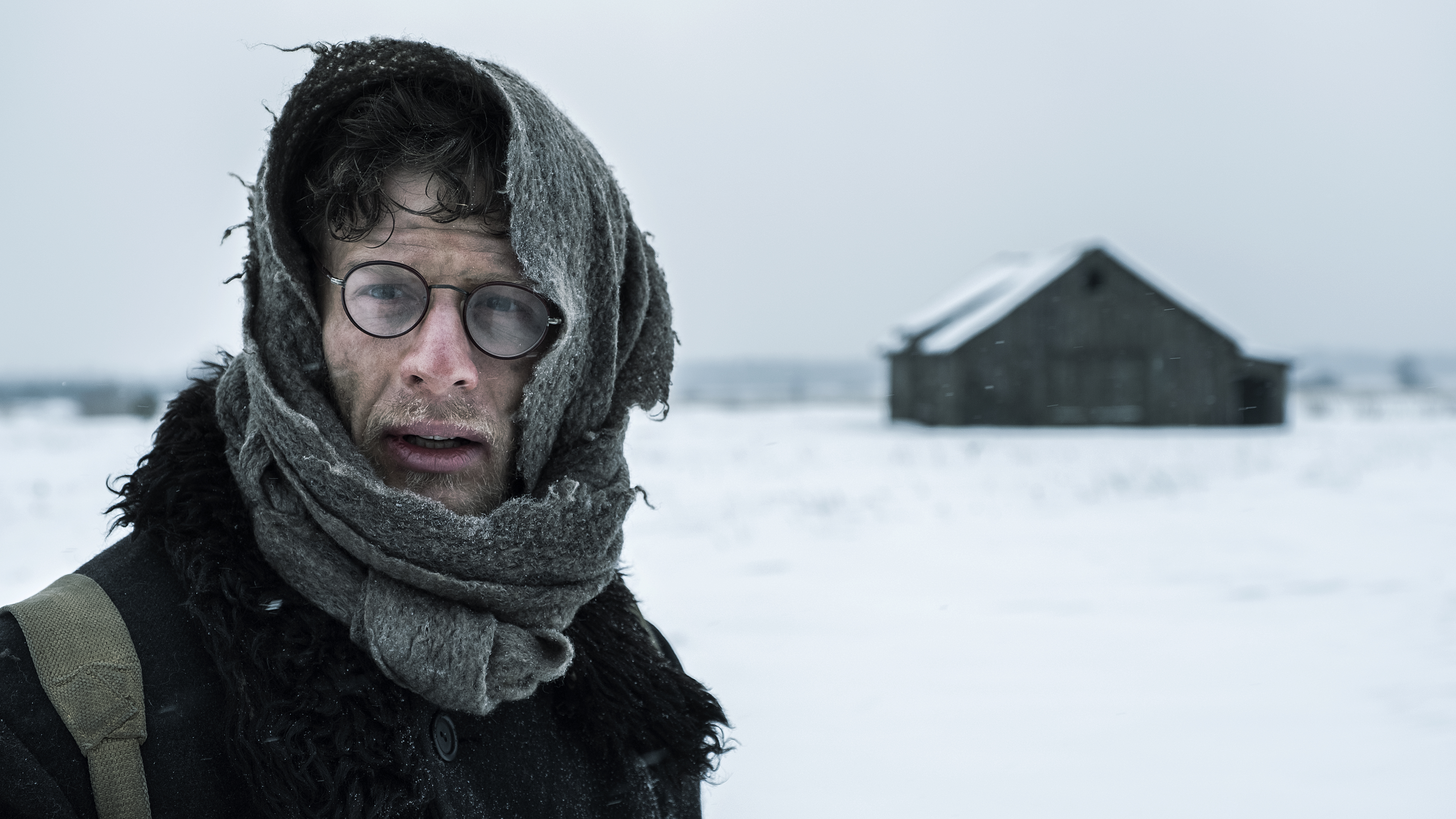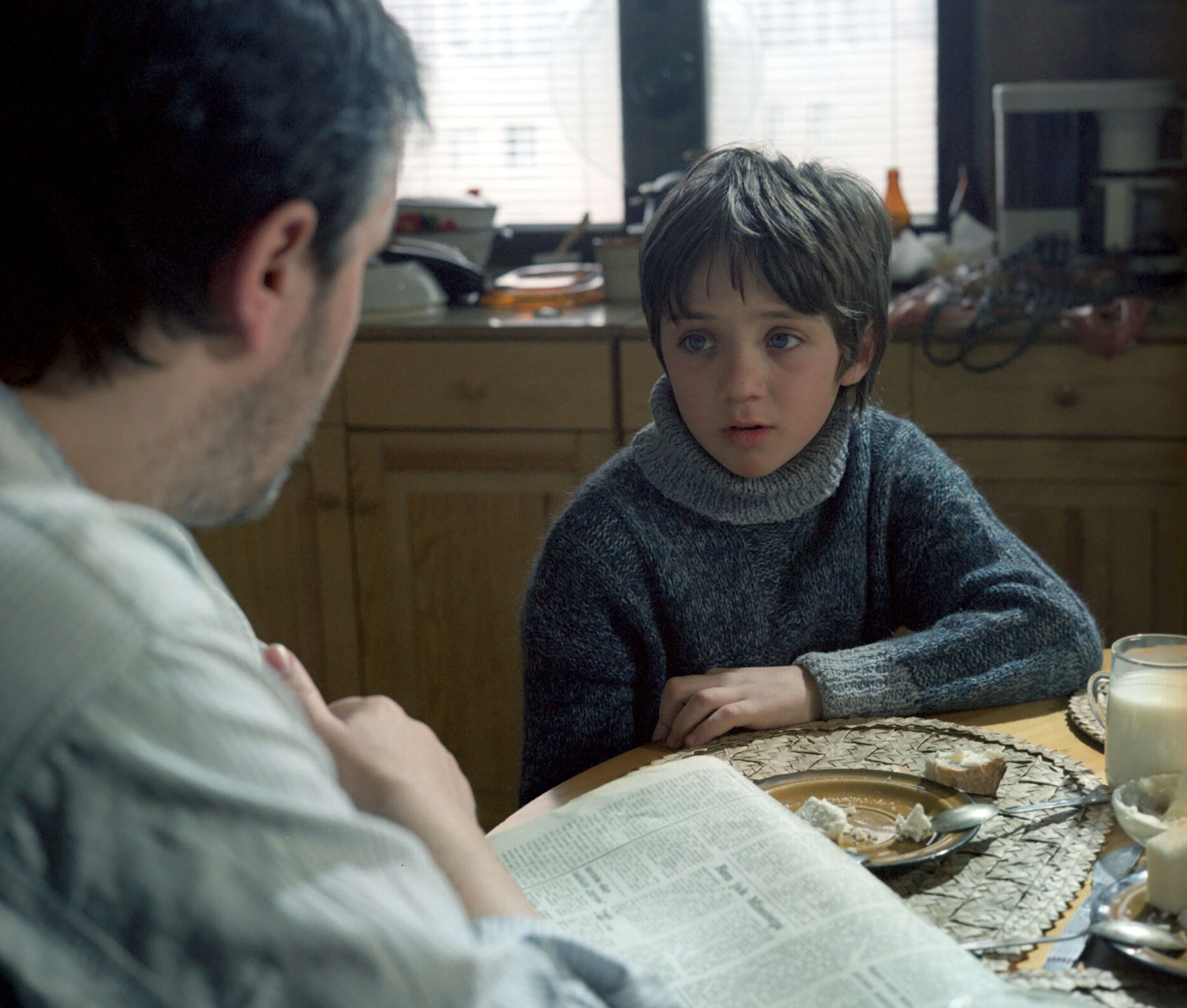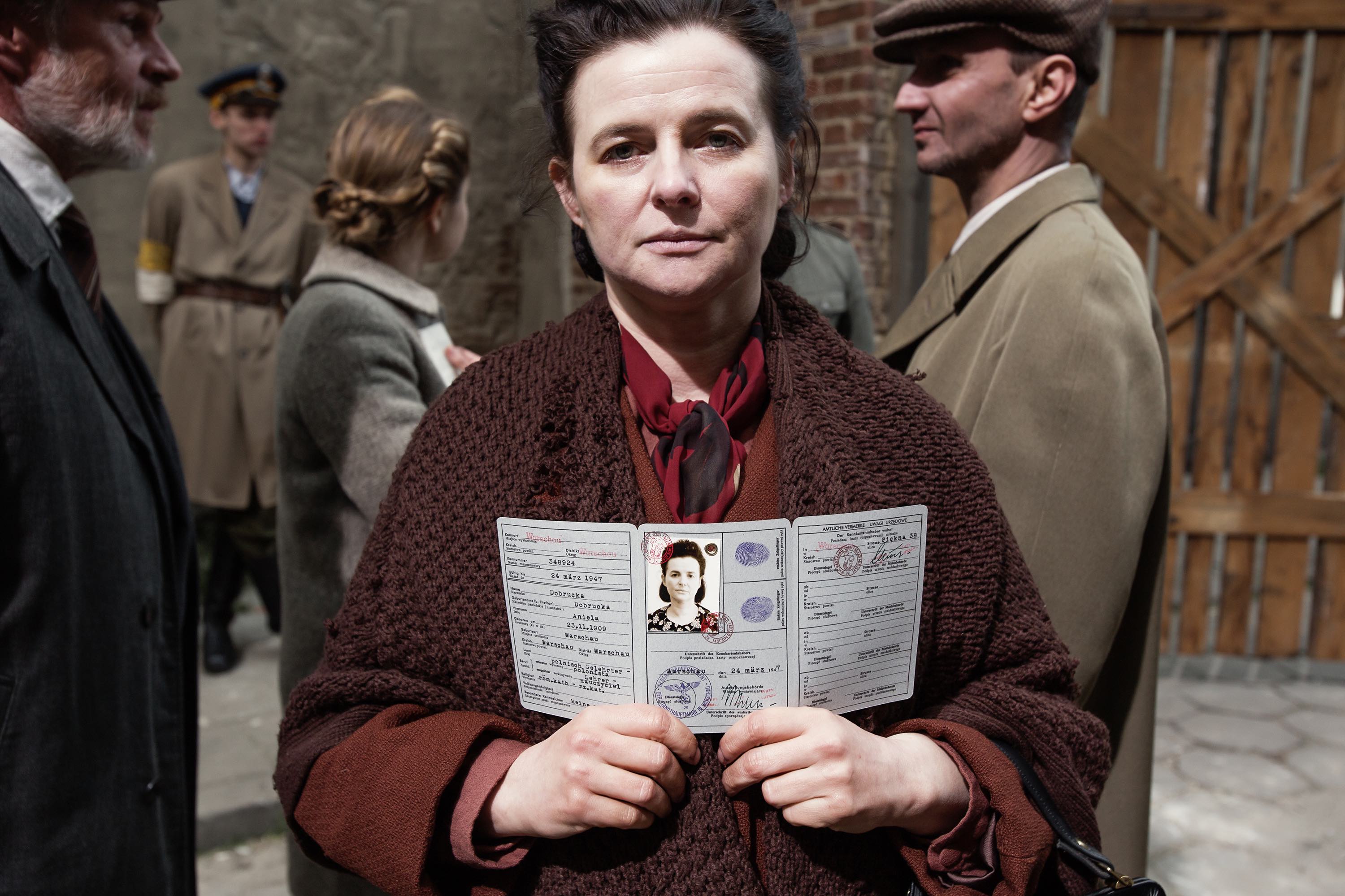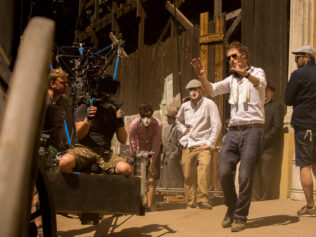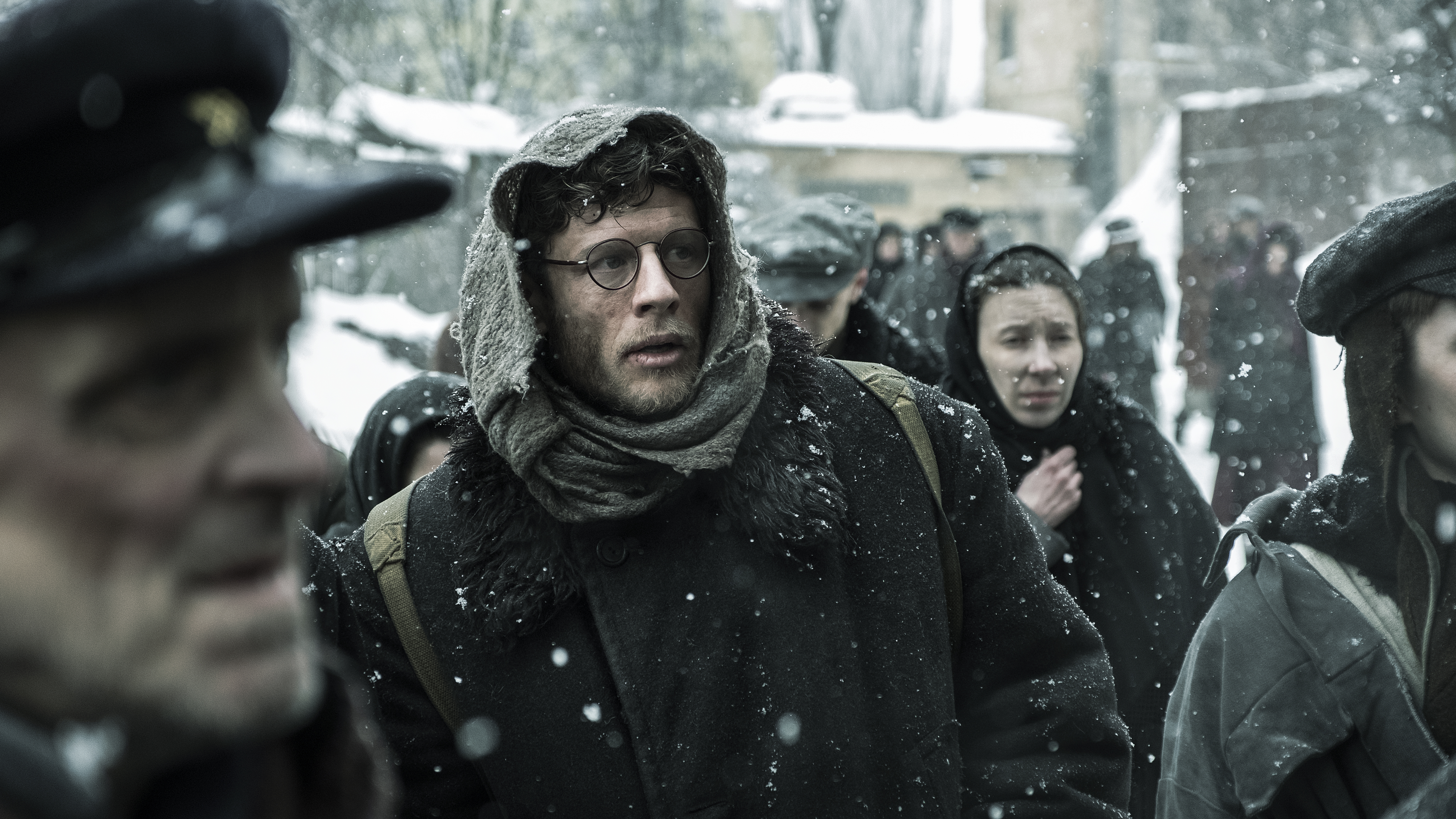
I come from the Dnipropetrovsk region, where thousands of inhabitants died from starvation during the Great Famine in Soviet Ukraine in 1932–1933; the total number of victims across the country varies from 3–10 million people. My great-grandmother, Irina, was 28 when the famine swept over the country. She was a single mother with two sons: my grandfather, Viktor, 6 years old, and his brother, Vova, 10. She worked at the factory canteen and was therefore able to feed her family.
The right to ignorance
I remember when I asked my parents about the Great Famine for the first time. They pityingly answered: “It was a year of crop failure after the revolution.” No wonder that they didn’t know about the tons of grain that were taken away from Ukrainian peasants and sold for export, while farmers themselves were dying from hunger. They didn’t know about the regime representatives going from hut to hut and confiscating all the food they could find. They couldn’t know that the Soviet guards were shooting on sight the starving peasants for stealing an ear of wheat to survive. These tiny details were cut off from their history books as undesirable. Startlingly, the true reason for the millions of deaths remained hushed up for over 60 years.
Since 1991, the year when Ukraine gained independence, the Terror-Famine has become a subject of discussion and deep research. Seven years after independence, the Ukrainian government finally set-up the Holodomor Victims Memorial Day; previously forbidden literature about the famine was brought into the school curriculum; monuments were installed in memory of the millions killed by hunger. In 2006, the parliament officially proclaimed the Holodomor an act of genocide of the Ukrainian nation, committed by the government of the Soviet Union.
Thus, I was the first generation in my family to learn about the Holodomor as a man-made famine. I clearly remember reading the novel Yellow Prince by Vasyl Barka as part of my homework, discovering the horrible consequences of Stalin’s regime, imagining the pictures of swollen kids starving to death. It was a true revelation, a severe emotional shock for the 12-year-old me. However, nothing shocked me more than the indifference of people; the fact that the horrific crime had remained almost unnoticed in Ukraine and the rest of the world for decades. It seemed that the only thing we learned was an appreciation for food.
An unexplored hero
Mr. Jones, a 2019 historical thriller directed by Agnieszka Holland, has become another revelation for me. Before the award-wining movie was released (it won the Grand Prix Golden Lions at this year’s Gdynia Film Festival), my family, friends and I had never even heard of Gareth Jones, a Welsh journalist who was the first to reveal the truth to the world about the Holodomor in Soviet Ukraine. Surprisingly, at school we learnt a lot about the victims of the famine and those who were responsible for the crime, but never about the heroes who risked their lives to tell the truth about the tragedy.
The movie, produced in conjunction with Poland, Great Britain and Ukraine, tells the story of the Cambridge graduate Gareth Jones (a 25-year-old Foreign Affairs Advisor to the then British Prime Minister Lloyd George) and his trip to Stalino (modern Donetsk in today’s Ukraine) in March 1933. This young, brave man neglected the ban on entry to Soviet Ukraine for foreign journalists and illegally went on a trip. What he found was death, emptiness and ubiquitous hunger. After returning to the UK, Jones risked his reputation by publishing around 20 articles, exposing the Terror-Famine.
By raising this topic – one that is still unpleasant for the international community – and evidently proclaiming Stalin guilty of the deaths of millions of Ukrainians, Holland commits a noble act herself. Local critics’ reviews in Russia are very unfavourable towards Mr. Jones. Vasily Koretsky, an author at Kinopoisk, the largest Russian website about cinema, has already claimed the picture to be an “anti-Stalinist thriller” with “blackjack and sluts” about “the adventures of a Western journalist”. With a premiere date for the movie still not set in Russia, it seems unlikely that the audience there will be able to watch it in theatres.
Admirably, Mr. Jones isn’t just a story about the Holodomor; it also attempts to trigger a discussion about the mission of journalism in the modern world, the issue of fake news, and the danger of indifference.
Carefully-served truth
The movie is mainly aimed at the non-Ukrainian audience; at all the Gareth Joneses around the world who are willing to go on a trip in search for a truth that has yet to be revealed. Mark Twain once said: “The truth must be served like a coat, and not thrown in the face like a wet towel.” The quote seems very appropriate when we speak of how Holland portrays the picture of the Holodomor. She doesn’t strike like lightning with images of skeletons and swollen kids, but rather plunges the viewer into a world of silent nightmares.
Once the Welsh journalist steps off the train in Stalino, the audience has more than enough time to re-adjust from images of well-fed communists to those of feeble peasants. The two-minute episode of Gareth running deep in the snowy woods, as he arrives at the Ukrainian village, serves the viewer as a portal to another reality. With the same carefulness, the Polish director depicts death from starvation. In the first hut that Gareth enters, he finds a neat kitchen, empty furnace, swept floor, and one thing that stands out in the picture – a small piece of tree bark next to the stove. In the next room, the journalist discovers an old couple lying lifelessly in bed with their eyes closed, as if they are just sleeping.
The film doesn’t rely on terrifying scenes of the famine. Instead, it uses other touches to engage the viewer in the story. For instance, the distinct sound of chewing food – as Gareth cuts a small piece of brown bread – excites esurience. The crushing silence and piercing emptiness of the village, in contrast to the outside world, make the picture more powerful, showing the scale of the death toll. “The next village to which I came had an unearthly quietness about it and it was long before I came upon any living being,” we read in Gareth Jones’s original report “There is no bread”.
Even when it comes to the few truly horrific scenes that show skinny corpses, the director doesn’t want you to feel intense disgust. And, while these fast-passing pictures might fail to catch tight emotionally, leaving the audience in a ‘safe zone’, they are able to give a foreign viewer a sense of the Holodomor. The movie doesn’t mean to scare away an audience that is learning about the terror for the first time, but to make them want to look closer. As Holland mentioned herself, after the film premiere in Berlin, some of the viewers began to search the phrase ‘the Holodomor’ on their smartphones, which was exactly the point.
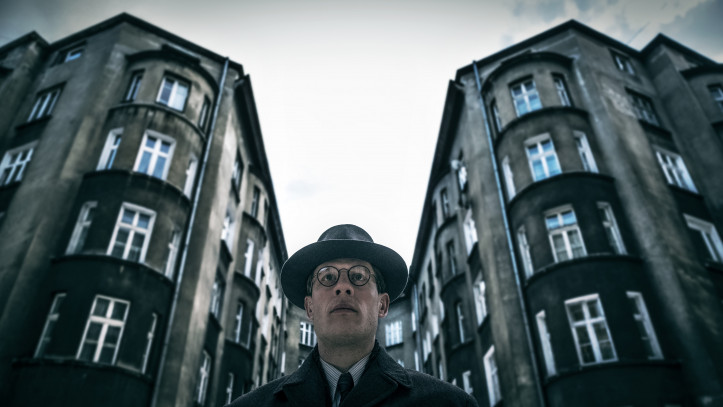
The right of Ukrainians to wish for more
While for a non-Ukrainian viewer Mr. Jones is a relatively safe journey, the Ukrainian audience might feel like it wasn’t enough. For us, the Holodomor is surely a huge, extremely painful part of history that can’t be told in just 25 minutes of a feature movie. Historians say that the Great Famine was one of the main reasons why Ukrainians voted for independence in the 1991 referendum. The third president of Ukraine, Viktor Yushchenko, made the Holodomor one of the focal points of his five-year presidential programme. It wouldn’t be an exaggeration to say that our Ukrainian identity partially stands on the story of the man-made famine.
Nor is it a surprise, that we, who learnt so much about the terror, might find some aspects of the movie to be too simplistic, such as the episode where Gareth sits on a tree at night. The eponymous character tears off a piece of tree bark and tries to chew it, coughing. As my grandfather told me, people couldn’t eat tree bark in its original form – instead they would make dough from frayed bark and oil cake, or use it as a flour. The main food for peasants at that time was cattle fodder, potato and potato husk, dry pounded leaves and buds from linden, orach and burdock. More importantly, peasants didn’t eat those ingredients individually, but mixed them in different ways and then often baked the resulting substance, using, for example, candle wax rather than oil.
Despite this, I find it fascinating how the movie doesn’t dehumanize the Ukrainian peasants, who steal food and even consume human flesh. The viewer doesn’t see beasts on the screen, but rather people tortured to the highest limit possible. Scientists of the Holodomor say that the system of moral and ethical values markedly changed during the hunger; people began to accept actions that had previously seemed unacceptable. There were cases where families with many children sacrificed one of their kids in order to feed the others. Some peasants would eat dead relatives. In fact, those people who resorted to cannibalism (about 2505 cases) were condemned by the very same Soviet authorities who had created the Holodomor, and were usually sentenced to death by execution. Once the famine was over, the phenomenon of cannibalism in Ukraine ended, too. Witnesses of the trauma understandably preferred to avoid memories associated with that period of their life.
Unfortunately, not all the consequences of the Holodomor have passed away so easily. In Ukraine, scientists at the University of Taras Shevchenko in Kyiv examined the effects of the Holodomor on individuals in 2003–2008. They surveyed 1000 citizens of Ukraine, who in 1932–1933 were between one and seven years old. These people were found to have phobias, unmotivated fear (55% of those polled), psychosomatic disorders (50%), low self-esteem and an unconscious inferiority complex (78%), and avoidance of all kinds of conflict situations (60%). Since phobias may be passed down genetically through generations, young Ukrainians might still experience the effects of the famine today, as the 2013 research from the Emory University School of Medicine in Atlanta suggests.
The Ukrainian audience might also feel that there was more to say about the famine; the silence could be filled with peasants’ stories. I wish that in the movie I could have seen Gareth interacting more with the peasants, engaging in meaningful conversations, staying as a guest in a hut for a night, discovering how excited some locals were to see a foreign journalist; how they used the chance to convey their sorrow to the rest of the world. It would be interesting to explore the feelings and perception of the Ukrainian peasants through Gareth’s eyes, especially as the journalist’s real trip to Soviet Ukraine was rich with local connections. Jones described such encounters and conversations in his original reports – the ones that undoubtedly contributed to the recognition of the Holodomor around the world.
This is why a Ukrainian director would never be able to create a movie like this, focusing on a Western audience. It would be almost impossible to stick to the main point – the story of a journalist – and not the Holodomor itself. A Ukrainian director most probably would use harder tricks to make the audience cry and sympathize more with the grief of the Ukrainian people. A great example of this is The Guide (Povodyr), a 2014 drama about Soviet persecution of Ukrainian folk musicians, directed by Oles Sanin. While the Ukrainian audience undoubtedly admire the picture, the Hollywood Reporter writes: “But while this finale packs an undeniable punch, The Guide is generally far too manipulative to be truly effective.”
An epiphany for Ukrainians
It seems that Agnieszka Holland’s movie has woken us Ukrainians from a long sleep. As soon as the authorities and media heard about Mr. Jones, they suddenly decided to speak aloud about the hero. The movie initiated a huge educational campaign in Ukraine. In November 2018, the first exhibition, “Gareth Jones. The Diaries” was held in Kyiv. Just two weeks before the movie’s premiere in Ukraine, the book “Price of the Truth. Gareth Jones”, which includes selected articles and a chronicle of the life of the Welsh journalist, was published. On 25th November, three days before the premiere, the President of Ukraine, Volodymyr Zelensky, awarded Holland the Order of Princess Olga for her “significant contribution to honouring the victims of the Ukrainian genocide, and highlighting the truth about the Holodomor.” Moreover, a lane in Kyiv was given the name ‘Gareth Jones’ right after the world premiere, in February 2019.
Learning about the victims of your nation and the culprits who made them suffer provokes feelings of anger and pain. Nothing unites the nation more than common pain, or, as the spiritual teacher Eckhart Tolle would say, a collective pain-body. “Tribes, nations and races, all have their own collective pain-body, some heavier than others, and most members of that tribe, nation, or race have a share in it to a greater or lesser degree.” Pain might help us to understand our ancestors, to learn from their mistakes, to draw conclusions. However, sticking to the pain alone can result in an addiction to unhappiness.
On the other hand, learning about heroes provokes hope, and inspires people to fight for their values, for justice, for a better future. Heroes serve us as role models. When the screen in the movie theatre went black and the credits started, tears rolled down my cheeks. I had no idea that someone from out there, from the better world, cared so genuinely, so deeply about the fate of the Ukrainian people.
Even today, many people – and perhaps we are among them – live in ignorance, or believe in distorted truth. Despite the high-speed internet and easy access to any information, the authorities still manage to lead information wars against one another. When the Russian military had just started to occupy Ukrainian territories six years ago, my uncle, who lives in Moscow, called my mum and said: “I heard, in Ukraine, Russian-speaking people are being killed. Come to us, here you will be safe.” Even after we explained to him that this was fake news, he didn’t quite believe us. Today, we are no longer in contact with each other.
In 1935, two years after his trip to Soviet Ukraine, Gareth Jones was murdered in mysterious circumstances in the Far East. This end to the journalist’s life – suspected to be connected with the Soviet NKVD – makes it easy to feel that there is little hope. This makes it all the more important to tell the stories of such individuals; those who, like the hero of Mr. Jones, risked it all in the name of truth.


